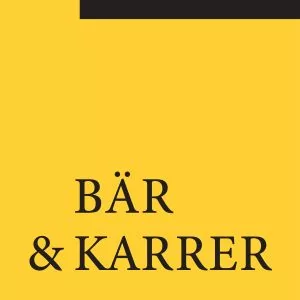In a recently released milestone decision (6B_503/2015 dated 24 May 2016), the Swiss Federal Supreme Court ("SFSC") held, for the very first time, that the duty of financial intermediaries to report suspicions of money laundering to MROS may extend beyond the end of the relevant business relationship. The purpose of this briefing is to summarize the SFSC's reasoning, identify some of the key questions raised by this latest case law and anticipate its potential practical impact for financial intermediaries in carrying out their compliance related duties.
Background
Financial intermediaries subject to the Anti-Money Laundering Act ("AMLA"), such as banks, insurance companies, securities dealers, external asset managers, fiduciaries, trustees etc. are bound by a wide range of duties set forth therein and in its related ordinances. Among other things, such financial intermediaries have a specific, enhanced duty to clarify the background and purpose of a transaction or the business relationship in certain situations, notably if there are indicia that the assets could stem from a crime or a qualified tax offence.
If, based on founded suspicions, a financial intermediary knows or assumes that the assets involved in the business relationship result from such a crime or qualified tax offence, he has the duty according to Art. 9 AMLA to immediately file a suspicious activity report with the Money Laundering Reporting Office Switzerland ("MROS"). In practice, most of the time suspicions become founded after the enhanced duty to clarify is completed.
The breach of the duty to timely report to MROS may give rise to criminal penalties (Art. 37 AMLA). Indeed, the law foresees a fine of up to CHF 500,000 for an intentional breach, respectively up to CHF 150,000 for negligence. Criminal liability is incurred in the first place by the individuals that acted, or failed to act, on behalf of the financial intermediary (employees, management, etc.). The fine may be imposed on the entity itself instead of the individual offenders only under certain requirements and provided that it does not exceed CHF 50,000. The offence set out in Art. 37 AMLA is prosecuted by the Federal Department of Finance and may come into play irrespective of the existence and outcome of a criminal investigation for money laundering.
The SFSC's reasoning
One of the issues examined by the SFSC in its decision of 24 May 2016 was the starting point of the seven-year limitation period applicable to the prosecution of the offence set forth in Art. 37 AMLA. In a nutshell, the appellant, a professional fiduciary (Treuhänder; fiduciaire), argued that the duty to report founded suspicions to MROS expired upon the termination of the business relationship – the triggering event in terms of the limitation period in case of a breach. According to the appellant, the offence was time-barred, since the first instance judgment had been rendered more than seven years after the termination of the business relationship.
Whilst acknowledging that the above issue is disputed in the legal literature, the SFSC upheld the approach followed by the previous instances (and further supported by certain scholars) and concluded that the duty to report founded suspicions to MROS may indeed survive a business relationship, as long as there exist assets that can be potentially forfeited. The SFSC mentioned that it would be appalling if a financial intermediary could avoid its duty to report founded suspicions to MROS by terminating a business relationship.
In the case submitted to the SFSC, the consequence thereof was twofold: (i) the financial intermediary's duty to report to MROS remained applicable until the suspicious funds were frozen by the prosecution authorities, and (ii) the criminal offence set forth Art. 37 AMLA was not yet time-barred at the time of the first instance judgment.
Key questions raised
The rather brief legal developments of the SFSC and the somewhat peremptory conclusion in connection with the duration of the duty to report make the overall situation uncertain. This latest case law raises several questions, such as the following (without limitation)1:
- Is the decision's scope limited to cases where the financial intermediary had founded suspicions before the termination of the business relationship?
- Or does it also apply to situations in which such suspicions appear afterwards (e.g. based on negative news spread in the media)?
- Which steps (if any) is the financial intermediary expected to undertake, in such a scenario, in view of clarifying the rationale or background of the suspicious transactions or of the overall (meanwhile terminated) relationship?
- How can a financial intermediary reasonably be able to tell, after the termination of the business relationship, if there are still assets (no longer under his control) that could be potentially forfeited?
- If a financial intermediary refrains from reporting founded suspicions to MROS after the end of the business relationship, may this be interpreted as an implicit admission that a report should have occurred earlier and thus that Art. 9 AMLA was breached?
- On the other hand, if founded suspicions are indeed reported to MROS after the end of the business relationship, will this not have the effect of bringing the matter to the authorities' attention and thus increase the risk of prosecution for breach of Art. 9 AMLA (late reporting)?
- Etc.
Potential practical impact
The practical impact of the decision 6B_503/2015 remains, to a large extent, unclear. Pending further guidance from the Courts, we recommend adopting a cautious approach, notably in cases where the founded suspicions appear after the end of the business relationship.
In these situations, in view of minimizing the potential exposure under Art. 37 AMLA and depending on the particular circumstances of each case, it might be advisable for the financial intermediary to consider reporting such suspicions to MROS, a minima pursuant to Art. 305ter para. 2 of the Swiss Criminal Code, which deals with the "right to file" mere suspicions of money laundering.
Footnotes
1 For a detailed analysis, see Alain Macaluso/Andrew M. Garbarski, Communication de soupçons de blanchiment après la fin de la relation d'affaires (to be published in Aktuelle Juristische Praxis/Pratique Juridique Actuelle, 10/2016).
The content of this article is intended to provide a general guide to the subject matter. Specialist advice should be sought about your specific circumstances.

